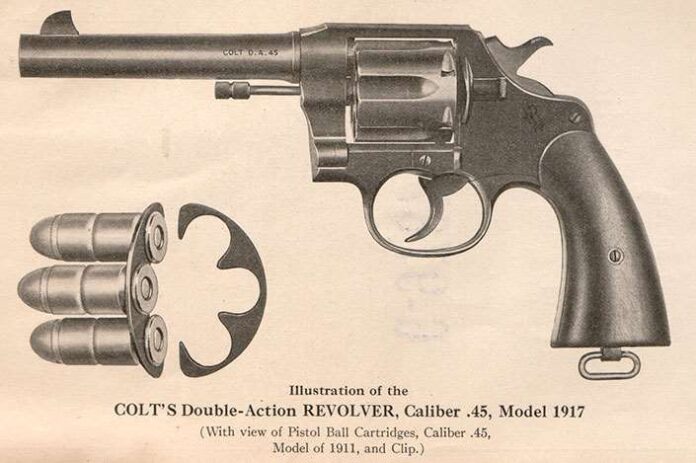
World War 1 is a fascinating war for a great many reasons. One of the more interesting aspects to me as an infantryman was the transformation of warfare. The introduction of machine guns, planes, and tanks changed warfare forever. This massive war was a meat grinder, and interestingly enough, the close-quarter combat of trenches made handguns more valuable than they typically are in warfare. Handguns were small and easy to use in close quarters and offered rapid-fire capability compared to bolt guns. With that in mind, I wanted to look at handguns, specifically the revolvers of World War 1.
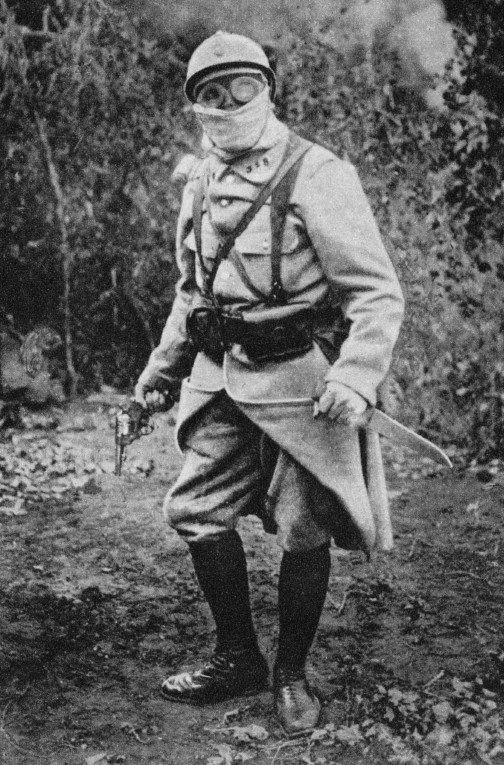
Don’t get me wrong, the rise of automatics was an interesting phenomenon, but it would be entirely too much to cover both the automatics of World War 1 and the revolvers of World War 1. If you’re interested in the automatics of World War 1, I will be penning that as a separate article. The revolvers of World War 1 represented a dying military technology. Revolvers would continue to be used until World War 2, but the writing was already on the wall. The thing was, no one had supplies of automatics lying around to arm their forces.
In fact, they often didn’t even have enough modern revolvers to go around. So, it wasn’t uncommon to see a gun we’d typically associate with the old west right beside a machine gun in World War 1. We are going to dig into the revolvers used by each major power of the Central Powers and the Allies.
Austria-Hungary – Rast and Glasser M1898
The Austro-Hungarian Army was served by the Rast and Glasser Model 1898. Prior to World War 1, the Austro-Hungarian military was looking to replace the revolver with two semi-auto pistols, but there simply weren’t enough. The Rast and Glasser M1898 combined new and old features from revolvers. It was a double-action, solid frame design with a side loading gate and extractor rod.

The round fired the 9mm Gasser, a now-extinct revolver round that wasn’t too far from being .38 Special. It propelled a 125.9-grain round at 790 feet per second. It’s not particularly notable, but interestingly, it made its way into Mauser C96 pistols. The Rast and Glasser M1898 is one of the less-known revolvers of World War 1 and was clearly behind the times.
Germany – M1879 Reichsrevolver
The Germans were very early adopters of automatic handguns and were ahead of the game when World War 1 jumped off. Still, with the war being so brutal and massive, they pulled out some old stock of revolvers. The Germans used over half a dozen different handguns in the war but only one revolver, the M1879 Reichsrevolver.
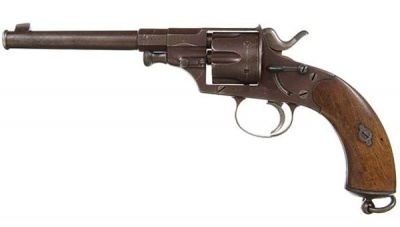
This was a single-action, solid-frame gun that loaded like a Colt with an ejection gate and ejection rod. Modern, it was not. The gun did have proper sights, more or less, and a very steampunk appeal. It fired a German 10.6x25mmR cartridge. This .41 caliber cartridge weighed 262 grains and flew 705 feet per second.
Turkey – S&W Model 3
Turkey, or, to be more accurate, the Ottoman Empire, carried the very cool S&W Model 3. To be fair, they mainly carried semi-auto handguns but had to break out the old Model 3s to supplement those automatics. The Model 3 is a neat gun that actually got around internationally quite a bit. It was a top-break revolver that made reloading quick. It was contained to a single-action design.
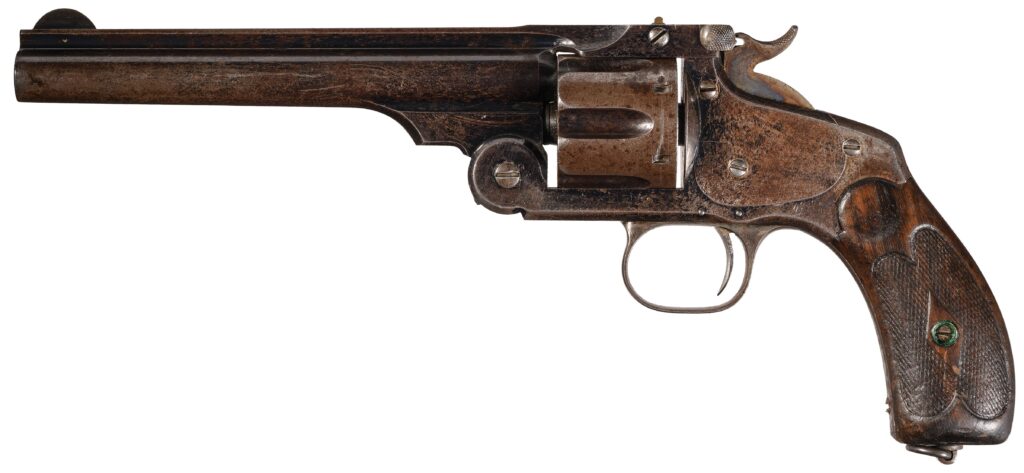
The Ottoman Empire purchased the gun to be functional with the Henry 1866 rifles they already had. This meant chambering the Model 3 in .44 Rimfire, a cartridge that was long obsolete even when the Turks adopted it. This was the only production rimfire pattern Model 3. These were also likely the only rimfire revolvers of World War 1.
France – Modèle 1892, Colt M1892, and S&W M1899
The French were in a rough spot in World War 1, and they, like all other countries, weren’t prepared. They used a ton of different handguns, some due to lend-lease with allies, others they purchased, and some were donated. The official French revolver of World War 1 was the Modèle 1892 in 8mm French Ordnance. This was a modern revolver that used a double action and swing-out cylinder. The 9mm French Ordnance was roughly the equivalent of a .32 ACP cartridge.

As part of foreign aid and sales efforts, the French obtained Colt M1892 revolvers and S&W M1899 guns. These were also modern double-action revolvers in various .38 caliber cartridges. These guns weren’t far from the Modèle 1892 in terms of use. So, it was likely an easy switch for French troops.
Great Britain – Webley Mk IV, Mk V, and Mk VI
The British loved revolvers enough that they didn’t want to upgrade even when World War 2 came around. Don’t take their advice to heart. They also rejected the idea of adopting SMGs after WW1. The British revolvers of World War 1 were all Webley models, and all essentially the same with improvements.
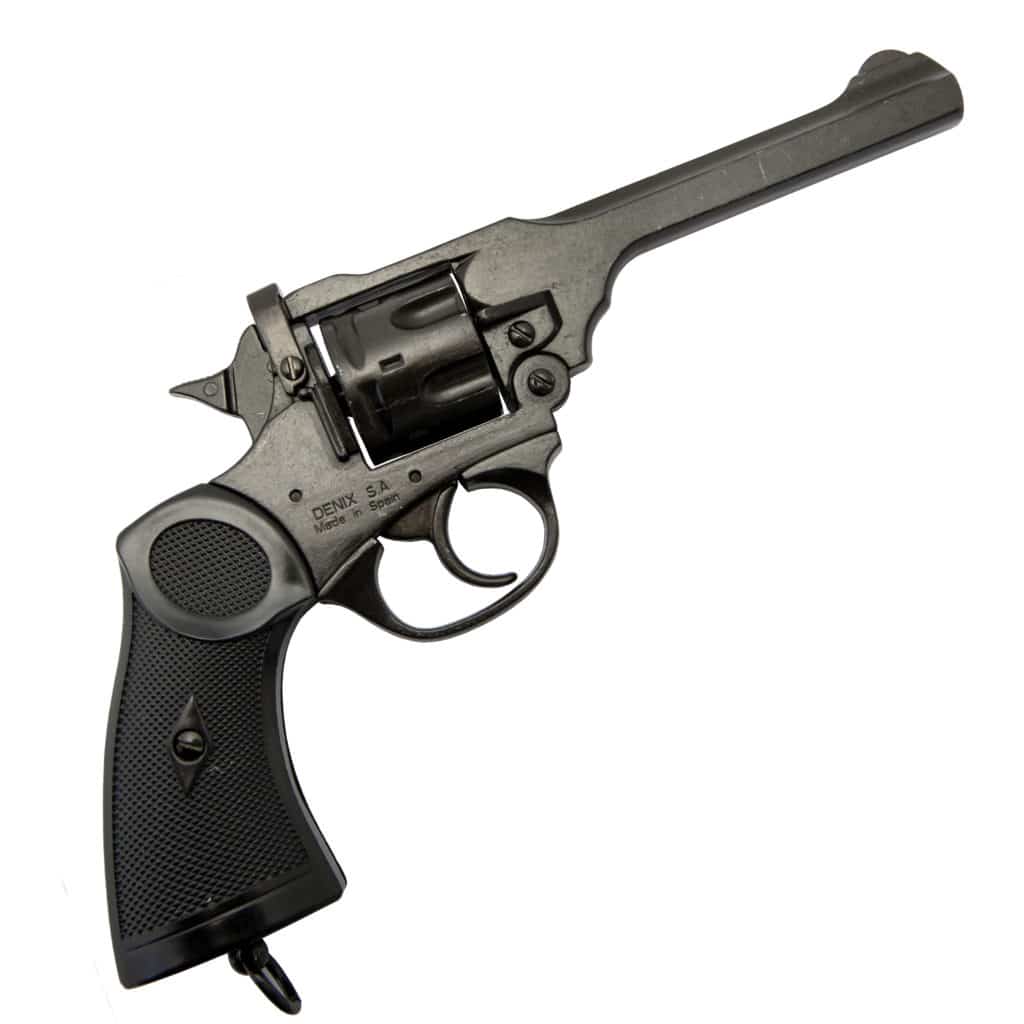
The Webley Mk IV, Mk V, and MK VI were all used. The Mk V was set to be the standard, but the Brits didn’t have enough, so they stuck with the Mk IV throughout the war. These are double-action revolvers with a top-break design for quick ejection and reloading. They fired the .455 calibre Webley, making them the most powerful top-break revolvers ever.
Russia – Nagant M1895
The Russians had it rough during World War 1. Not only did they have a World War to contend with, but a Civil War and revolution. The Russians came to war with the Nagant M1895. The Nagant is a double-action revolver with a side gate loading design. It was quite out of date in World War 1. The revolver famously used a gas seal system that utilized a special round and a cylinder that moved forward to create a gas seal. It’s one of the few revolvers that can be silenced.
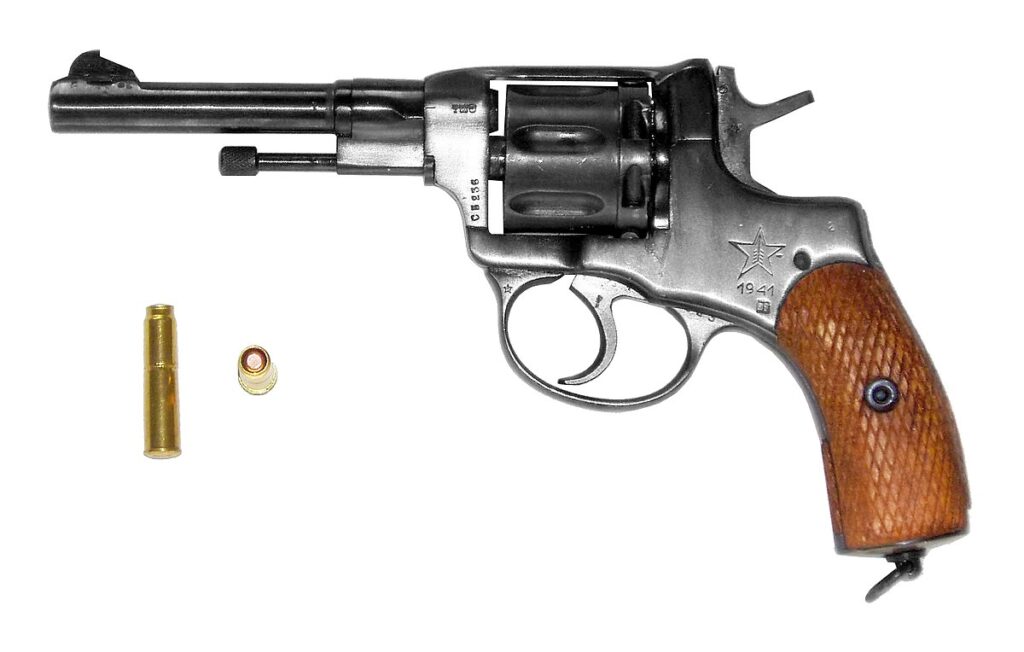
The Nagant’s 7.62x38mmR cartridge was nearly rifle length. The round sits beneath the mouth of the cartridge, and it has a fairly unique look. The rounds weren’t known for their power. It propelled a 108-grain cartridge at 1,000 feet per second.
United States – Colt M1917 and S&W M1917 (And Tons More)
I saved the best for last, right? The M1911 was the standard handgun of this era, but the American forces didn’t have enough. They turned to S&W and Colt to produce revolvers that chambered the .45 ACP cartridge. S&W and Colt both produced M1917 revolvers that were similar but with somewhat small differences. These were popular enough to stick around until World War 2.
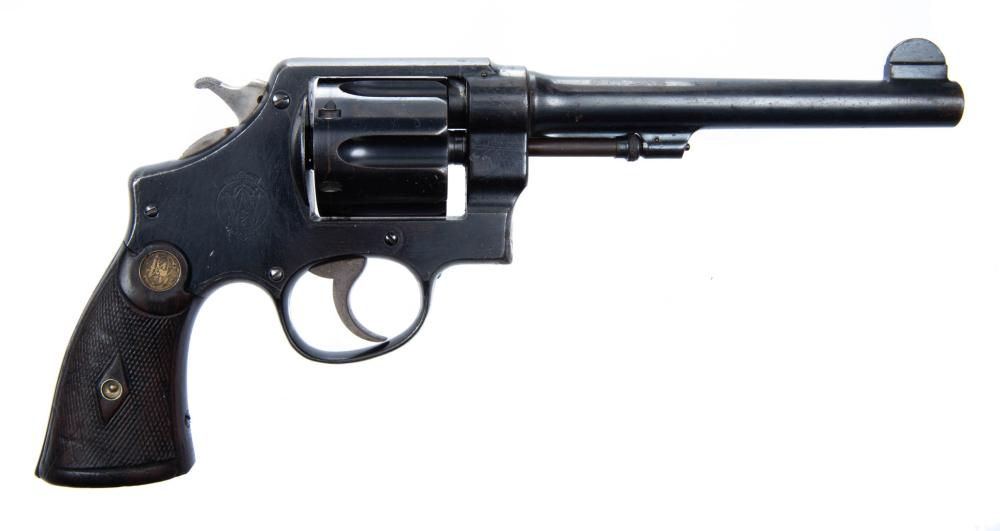
The United States contributed a ton of revolvers to World War 1. Even with M1917 production, stocks of old guns were brought out. This includes various Colt and S&W revolvers in various .38 caliber cartridges. These guns were built to last, and last they did. The United States even brought back the Colt M1873 Single Action Army so the American cowboy could right one more time.
The Revolvers of World War 1
This article just covers the major parties and their revolvers. It’s certainly not exhaustive. There were tons of revolvers used in the Great War. Logistically it was likely a nightmare, but when you need guns, you take what you can get. This was the last major conflict where revolvers were considered the norm, and it’s fascinating to observe the number of different revolvers that made it to war.



